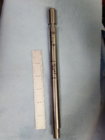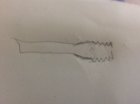Seems like everybody these days are using purchased mandrel with bushings to find "center line" of an action. What happened to making a mandrel on a lathe and threading it into the action? Now pardon my ignorance, but iam i in the wrong mind set to think this would work? Threads all have clearence in them so if the reciever face is trued then theoretically the reciever should screw on flat to the action if the clearence within the threads is sufficent.
How how perfect is too perfect, i mean that anyone would even notice? I have done countless hours of research and i can see where madrels with bushings that ptg sells would be benifical especially for truing the threads and lug abutments but there soooo expensive.
Is ther a way to true a reciever without having to spend an arm and leg, especially for only doing a few a year? I know you can make a straight mandrel and machine your own bushings, but seems like maybe this whole process of truing a action is over thought to a certain degree? Am i wrong?
How how perfect is too perfect, i mean that anyone would even notice? I have done countless hours of research and i can see where madrels with bushings that ptg sells would be benifical especially for truing the threads and lug abutments but there soooo expensive.
Is ther a way to true a reciever without having to spend an arm and leg, especially for only doing a few a year? I know you can make a straight mandrel and machine your own bushings, but seems like maybe this whole process of truing a action is over thought to a certain degree? Am i wrong?












